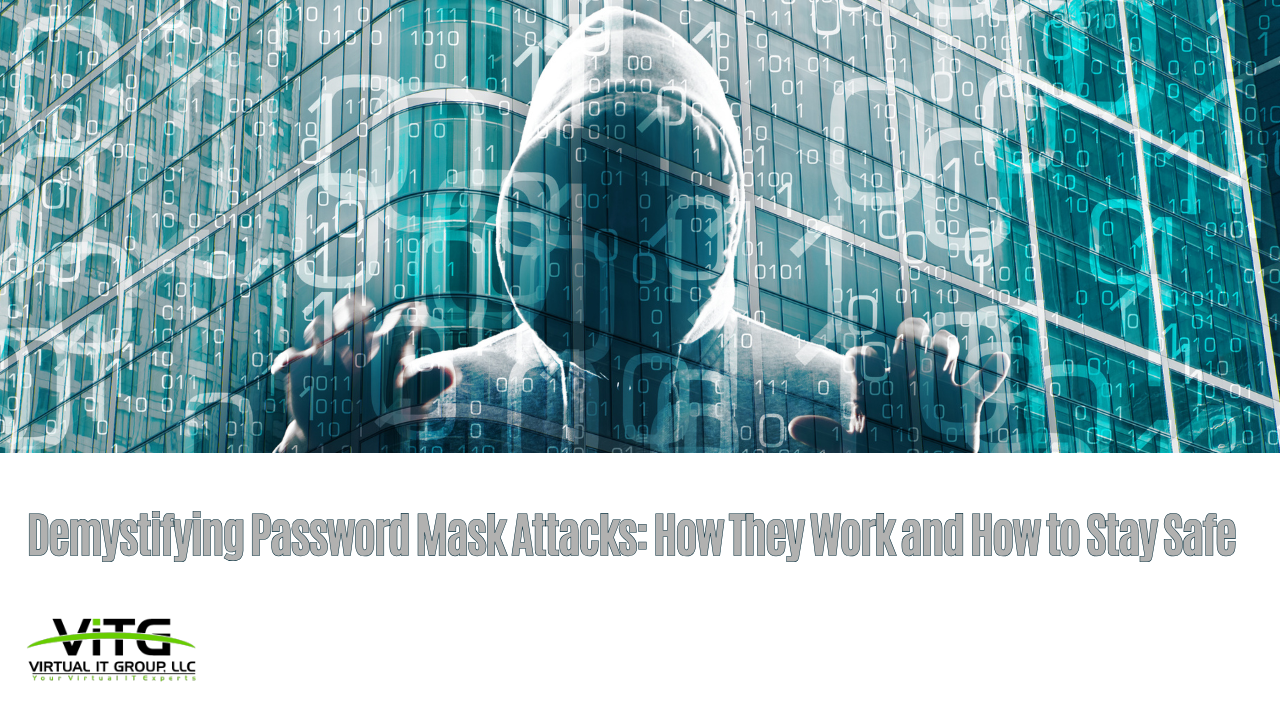In today’s digital world, strong passwords are our first line of defense against cyberattacks. But what happens when even a complex password isn’t enough? This is where password mask attacks come in.
What is a Password Mask Attack?
Imagine a thief trying every single key on their keychain to unlock your door. A brute-force attack on passwords works similarly, attempting every possible combination of characters until the correct one is found. It’s a time-consuming process, but for short or simple passwords, it can be successful.
A password mask attack, on the other hand, is a more targeted approach. Think of it like the thief having a hunch that your key has four teeth and starts with a flat edge. They’ll still try different combinations, but only within a specific format.
Here’s how it works:
- Attackers Leverage Patterns: They exploit common password creation habits. People often use a combination of uppercase and lowercase letters, numbers, and symbols. They might also incorporate personal details like birthdays or pet names.
- Crafting the Mask: The attacker creates a mask, a template representing the potential structure of the password. This mask uses fixed characters (known elements) and variable characters (positions to be cracked). For example, the mask “?pet???” represents a password with six characters, where the first and last characters are unknown (“?”), the second might be uppercase (“P”), and the third and fourth could be any number (“??”).
- Testing the Combinations: Using powerful computers, attackers try different combinations within the mask’s format. If a match is found with a stored password hash (a scrambled version of the actual password), the attack is successful.
Why are Mask Attacks Dangerous?
While brute-force attacks are often slow, mask attacks can be much faster. By focusing on specific patterns, attackers can significantly reduce the number of guesses needed. This makes them particularly dangerous for:
- Weak Passwords: Simple passwords with predictable patterns are easily cracked using masks.
- Data Breaches: If a data breach exposes password hashes, attackers can use mask attacks to try and crack them, especially if users reuse passwords across accounts.
How to Protect Yourself from Mask Attacks
Here are some essential steps to safeguard your passwords against mask attacks:
- Create Strong, Unique Passwords: Use a combination of uppercase and lowercase letters, numbers, and symbols. Aim for at least 12-15 characters. Avoid using personal information or dictionary words. Our guide on strong password creation [invalid URL removed] offers valuable tips.
- Enable Multi-Factor Authentication (MFA): MFA adds an extra layer of security by requiring a second verification code after entering your password. This makes it much harder for attackers to gain access even if they crack your password.
- Don’t Reuse Passwords: Having a unique password for each account ensures a breach on one platform doesn’t compromise your others. Consider using a password manager to help you create and store strong, unique passwords.
- Stay Informed: Keep yourself updated on the latest cybersecurity threats. Virtual IT Group provides valuable resources to stay informed, like our blog.
The Importance of Security Awareness
Everyone plays a role in cybersecurity. Businesses should implement strong password policies and educate their employees on password hygiene. By understanding password mask attacks and taking preventative measures, we can all create a more secure online environment.
If you want to know how to protect your system better from cyber-attacks, visit our site now!


